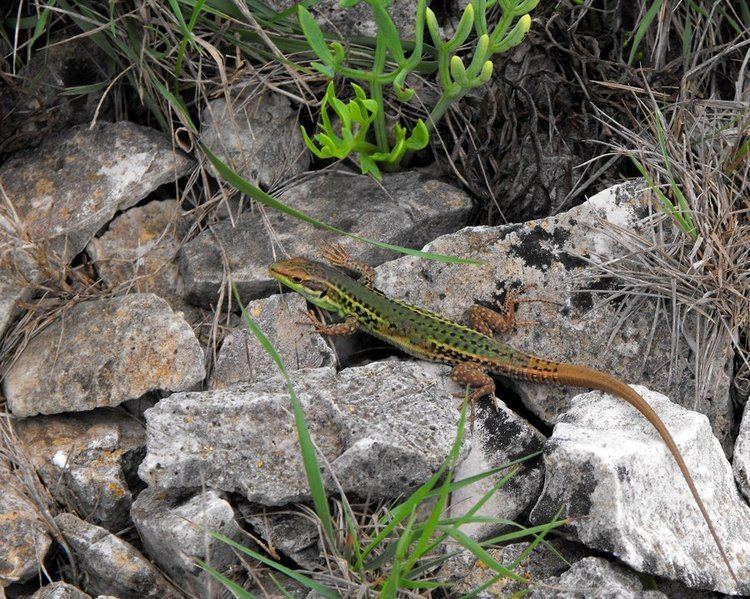Higher classification Podarcis | Phylum Chordata Scientific name Podarcis waglerianus Rank Species | |
 | ||
Similar Podarcis, Reptile, Aeolian wall lizard, Lacertids, Filfola lizard | ||
The Sicilian wall lizard (Podarcis waglerianus) is a species of lizard in the family Lacertidae. Endemic to Italy, it occurs in Sicily and the Aegadian Islands.
Contents
Its natural habitats are temperate forests, temperate shrubland, Mediterranean-type shrubby vegetation, temperate grassland, arable land, pastureland, and rural gardens. The IUCN does not consider it to be a threatened species. Three subspecies are recognized: P. w. antoninoi, P. w. marettimensis and P. w. waglerianus.
Etymology
The specific name, waglerianus, is in honor of German herpetologist Johann Georg Wagler.
Description
The Sicilian wall lizard grows to a length of about 7.5 cm (3 in) with males being slightly larger than females. The dorsal surface is usually green but some females may be olive or brownish. There is usually a well-defined white or yellow dorso-lateral stripe and often a brown stripe, or series of dots, running along the spine. There are other dark spots in rows on the back and flanks of males but females are often a more uniform colour. The underparts are white with a spotted throat, but may be suffused with orange, pink or red in breeding males. The Sicilian wall lizard differs from island populations of the Italian wall lizard in having a deeper head, more slender form, more speckled (rather than reticulated) markings and the brighter colour of the underparts.
Distribution and habitat
The species is endemic to Sicily and the Aegadian Islands, though it is absent from the northeastern part of Sicily. It frequents areas with lush vegetation on the edges of woodland, bushy slopes, pasture and cultivated land. It is often present in gardens, especially irrigated ones. In contrast to the Italian wall lizard it does not climb much and occupies more densely vegetated areas. It is the commonest wall lizard inland while the Italian wall lizard is the more common near the coast.
Biology
The female lays a clutch of four to six oval eggs usually concealed at the base of a plant. They hatch after about eight weeks and the newly hatched juveniles are about 5.5 cm (2.2 in) long.
Status
P. waglerianus is widespread in Sicily, is tolerant of a range of habitats and is assumed to have a large total population. Its populations are in general stable, though it may be declining in abundancy on some islands. The International Union for Conservation of Nature has assessed it as being of "least concern".
